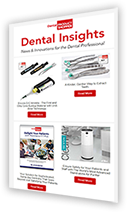The most frustrating problem in dentistry is when we perform a beautiful, direct or indirect tooth-colored, bonded restoration, and 2 weeks later our patient calls complaining of postoperative sensitivity. We know it was not even close to the pulp, and yet the demand for tooth-colored restorations continues to increase. The need for a dependable bonding system has never been greater.
Self-Etch vs. Total-Etch
Experience has shown that although total-etch systems can be predictable, they are more technique sensitive than self-etch.1 With total-etch, a minor variation in moisture will result in decreased bond strength to dentin and postoperative sensitivity. More than 4000 dentists reported a 4-fold increase in severe postoperative sensitivity when using total-etch, compared to those using self-etch.2 This underscores a clinical reality: achieving perfect moisture control and a perfect dentin tubule seal is difficult.
From a clinician's perspective, bond strength is not the primary quality of a bonding system. A good bonding system must provide excellent adhesion and seal, be durable, and be user friendly and forgiving, thus decreasing the chances of postoperative sensitivity and leakage.
Clearfil Protect Bond from Kuraray fulfills all of these characteristics and more.
Strong, Reliable, and Predictable
Clearfil Protect Bond is the next generation of one of the most respected bonding systems in the world? Clearfil SE Bond. Clearfil Protect Bond uses the same high bond strength, self-etch technology, with 2 improvements. First, it incorporates the new MDPB monomer in the primer, which kills any bacteria in the cavity, decreasing bacterial growth under the restoration. Second, it releases fluoride to strengthen the adjacent tooth structure. This is achieved by using a new bonding technology with semi-permeable polymer capsules, which slowly release fluoride and maintain the system?s mechanical properties. This fluoride release has been found to improve the longevity of the bonding interface.3
Clearfil Protect Bond is engineered to be durable and user friendly. I use it, not because it is easier, but because it is strong, predictable, and reliable.
References
1. Perdigao J. Total-etch versus self-etch adhesives; effect on postoperative sensitivity. J Am Dent Assoc. 2003;134:1621-1629.
2. CRA Newsletter. 2004;27(11/12).
3. Donmez N, Balli S, Pashley DH, et al. Ultrasturcture correlates of in vivo/in vitro bond degradation in self etch adhesives. J Dent Res. 2005;84:335-359.




